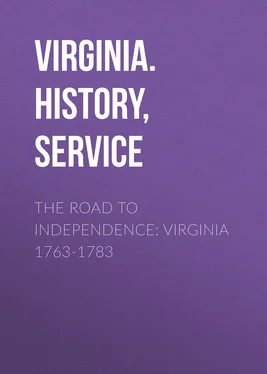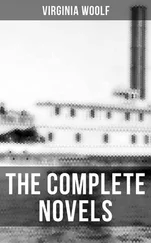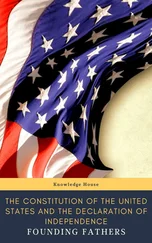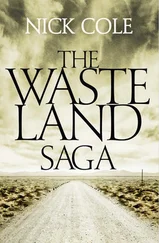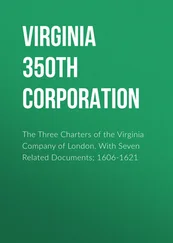Virginia. History, Government, and Geography - The Road to Independence - Virginia 1763-1783
Здесь есть возможность читать онлайн «Virginia. History, Government, and Geography - The Road to Independence - Virginia 1763-1783» — ознакомительный отрывок электронной книги совершенно бесплатно, а после прочтения отрывка купить полную версию. В некоторых случаях можно слушать аудио, скачать через торрент в формате fb2 и присутствует краткое содержание. Жанр: foreign_prose, История, foreign_edu, foreign_antique, на английском языке. Описание произведения, (предисловие) а так же отзывы посетителей доступны на портале библиотеки ЛибКат.
- Название:The Road to Independence: Virginia 1763-1783
- Автор:
- Жанр:
- Год:неизвестен
- ISBN:нет данных
- Рейтинг книги:4 / 5. Голосов: 1
-
Избранное:Добавить в избранное
- Отзывы:
-
Ваша оценка:
- 80
- 1
- 2
- 3
- 4
- 5
The Road to Independence: Virginia 1763-1783: краткое содержание, описание и аннотация
Предлагаем к чтению аннотацию, описание, краткое содержание или предисловие (зависит от того, что написал сам автор книги «The Road to Independence: Virginia 1763-1783»). Если вы не нашли необходимую информацию о книге — напишите в комментариях, мы постараемся отыскать её.
The Road to Independence: Virginia 1763-1783 — читать онлайн ознакомительный отрывок
Ниже представлен текст книги, разбитый по страницам. Система сохранения места последней прочитанной страницы, позволяет с удобством читать онлайн бесплатно книгу «The Road to Independence: Virginia 1763-1783», без необходимости каждый раз заново искать на чём Вы остановились. Поставьте закладку, и сможете в любой момент перейти на страницу, на которой закончили чтение.
Интервал:
Закладка:
and Geography Service Government Virginia. History
The Road to Independence: Virginia 1763-1783
Foreword
In the public schools of Virginia, various courses deal with American history, and consideration and study is given to the Colonial Period from kindergarten through grade twelve. The publication entitled, THE ROAD TO INDEPENDENCE: VIRGINIA 1763-1783, offers teachers in the secondary schools of Virginia a special challenge to select important areas of emphasis for the period 1763-1783 that will provide an improved perspective for students to see new meaning in familiar events. The teacher should present the material in a broader context so as to enable young Americans to comprehend the ideas, events, and personalities of the period. It is hoped that this publication will help to accomplish this goal.
W. E. Campbell State Superintendent of Public InstructionIntroduction
This publication was prepared to assist teachers in developing topics of study relating to the American Revolution and Virginia's role in the winning of independence and to help students develop deeper appreciation for the rich heritage that is theirs as citizens of the Commonwealth. The Virginia tradition was created by responsible men and women who believed in the inherent dignity of the individual, the role of government as a servant of the people, the value of freedom, justice, equality, and the concept of "rule of law." These ideals and beliefs remain the hallmark of Virginia and the nation.
Important objectives of this publication are:
To emphasize the study of Virginia history during the period from 1763 to 1783 when the state exerted influential leadership and wisdom in the winning of American independence;
To develop a deeper understanding of the meaning of freedom and basic principles and traditions which have nourished and sustained the American way of life;
To further the students' understanding of individual rights and responsibilities in a free society;
To further acquaint students with their heritage of freedom and the importance of perpetuating democratic traditions; and
To further students' understanding of the concept of self-government and the American way of life.
It is hoped that this publication will assist in achieving these objectives.
The Road to Independence:
Virginia 1763-1783
Part I:
1763: The Aftermath of Victory
Virginia in 1763 appeared to stand on the edge of a new era of greatness. The Peace of Paris signed that year confirmed the total victory of the British in North America during the long French and Indian War (1754-1763). Virginia's natural enemies were subdued: the French were driven from Canada, the Forks of the Ohio, the Illinois Country, and Louisiana; the Spanish were forced to give up Florida; and the Indians, now without any allies, were defeated or banished beyond the Appalachians. Virginians were free to continue their remarkable growth of the past 40 years during which they had left the Tidewater, pushed up the James, Rappahannock, Appomattox, and Potomac river basins, and joined thousands of Scotch-Irish and Germans pushing southward out of Pennsylvania into the Valley of Virginia. Although they were halted temporarily in 1755 when Braddock's disastrous defeat in Pennsylvania and the massacre of frontier pioneer James Patton at Draper's Meadow (Blacksburg) encouraged the Indians to resist the white man's advance, Virginians eagerly eyed the lands in southwestern Virginia along the Holston, Clinch, and French Lick Rivers and those that lay beyond the mountains along the Ohio. This territory, from which was carved the states of Kentucky and West Virginia, made Virginia, even without considering her strong claim to all the lands north of the Ohio, the largest of the American colonies.
"He has refused to
assent to laws the most
wholesome and necessary
for the public good...."
Following the end of the French and Indian war, Virginians expected to recapture the economic prosperity that had been interrupted by the conflict. In 1763, they were the most affluent and the most populous white colonists. There were at least 350,000 settlers, including 140,000 slaves, in Virginia. Pennsylvania, the next largest colony, had 200,000 residents. If the past was any indication, the numbers of Virginians surely would multiply. In 1720 there were 88,000 colonists in Virginia, 26,000 of whom were black. The years between 1720 and 1750 had been very fruitful ones and were to be remembered as "the Golden Age" of Colonial Virginia. Virginia and Maryland were ideal colonies for the British. The Chesapeake colonies produced a raw material (tobacco) which the British sold to European customers, and they bought vast quantities of finished products from craftsmen and manufacturers in the mother country. These were years when the English mercantile system worked well. There was lax enforcement of the Navigation Acts, liberal credit from English and Scots merchants, generous land grants from the crown, a minimum of interference in Virginia's government, and peace within the empire. Both mother country and colony were happy with the arrangement. With peace would come a renewal of those "good old days." Or so Virginians thought. But it was not to be so.
It is never possible to return to the status quo ante bellum. It would not be possible for Great Britain to do it in 1763. The British ended the Seven Years War (the French and Indian War 1756 became a general world war) as the dominant country in Europe, triumphant over France in India, the West Indies, and North America, and owners of Spanish Florida. Yet victory had its price and its problems. The wars had to be paid for; a policy for governing the new territories had to be formulated; the Indian tribes beyond the Appalachians had to be pacified and protected; and Britain had to remain "at the ready" to defend her newly-won position of power.
Neither France, nor Spain, was about to give in easily. The French, particularly, were awaiting the chance to challenge the British. For that reason, the Peace of Paris was only a truce in a series of wars which began in the 1740's and did not end until the defeat of Napoleon in 1814. The eager French support of the American Revolution was based on more than the attraction of young aristocrats like Lafayette to the republican ideals of a war for independence. French self-interest and revenge also were heavily involved.
The foremost task facing Britain was meeting the costs of victory. To gain and maintain the new empire cost great sums of money which the crown knew it could not extract from British taxpayers already overburdened with levies on land, imports, exports, windows, carriages, deeds, newspapers, advertisements, cards and dice, and a hundred other items of daily use. The land tax, for instance, was 20 percent of land value. These were taxes parliament had levied on residents in Great Britain but not on the colonists. Many taxes had been in effect since an earlier war in the 1740's (King George's War). With the national debt at a staggering £146,000,000, much of it the result of defending interests in the New World, and several million pounds owed to American colonies as reimbursement for maintaining troops during the war, British taxpayers, rich and poor alike, expected relief. In fact, these war debts forced parliament to impose additional taxes in 1763, including a much-despised excise tax on cider. It is hardly surprising to find most Britons agreed that in the future the Americans should be responsible for those expenses directly attributable to maintaining the empire in America. That future costs were to be shared seemed politically expedient and the reasonable thing to do. Every ministry which came to power in Britain after 1763 understood this as a national mandate it could not ignore.
Читать дальшеИнтервал:
Закладка:
Похожие книги на «The Road to Independence: Virginia 1763-1783»
Представляем Вашему вниманию похожие книги на «The Road to Independence: Virginia 1763-1783» списком для выбора. Мы отобрали схожую по названию и смыслу литературу в надежде предоставить читателям больше вариантов отыскать новые, интересные, ещё непрочитанные произведения.
Обсуждение, отзывы о книге «The Road to Independence: Virginia 1763-1783» и просто собственные мнения читателей. Оставьте ваши комментарии, напишите, что Вы думаете о произведении, его смысле или главных героях. Укажите что конкретно понравилось, а что нет, и почему Вы так считаете.
